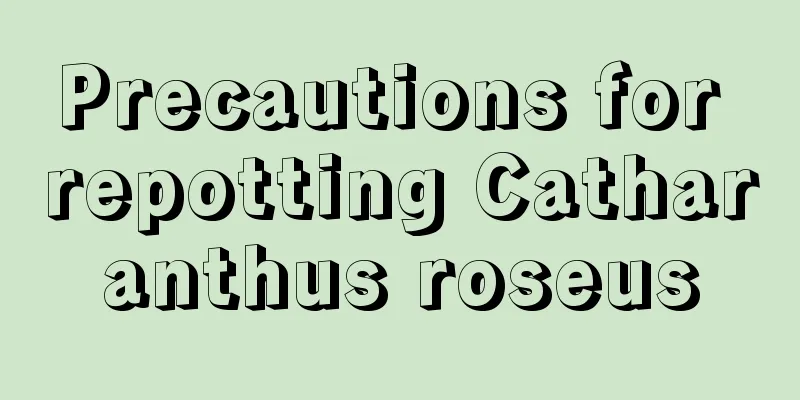High-yield planting technology of passion fruit

|
In recent years, passion fruit has performed quite well in the market. Many young women like to drink passion fruit juice mixed with water, which has good effects. The nutritional value of passion fruit is very high. In order to successfully grow passion fruit, you need to master certain skills and knowledge. Below we will learn about the high-yield passion fruit cultivation techniques . 1. Site selection and park construction Choose a suitable plot of land to establish an orchard. Passion fruit does not have high requirements for soil. It is recommended to choose a gentle slope, terrace or flat land with sandy loam that is sheltered from the wind and facing the sun. It is best to choose a plot that is rich in organic matter, well-drained, has a deep soil layer and a pH value between 5.5 and 6.5. After selecting the site, build a support in time. Because passion fruit is a climbing fruit tree, a support is needed. You can choose a trellis, trellis, "T"-shaped frame or simple bamboo pole support, etc. For courtyard planting, you can choose a large trellis . Planting is usually carried out on cloudy days or sunny days after rain. When planting, the soil should be filled in layers, compacted, and the root system should be arranged. An appropriate amount of decomposed organic fertilizer can be mixed with sandy loam as planting soil or covering soil. After planting, water the plants to ensure they have established roots and cover them with film or straw. 2. Planting time Determine the planting time according to the height of the seedlings, and the seedlings can be planted when they are more than 25 cm tall. The plots with watering conditions can be planted as early as possible, while the plots with water shortage are best planted in May or June when the rainy season begins. For those planted before the rainy season, due to the dry weather, water them every 10 to 15 days to keep the soil moist. 3. Planting density Passion fruit is a vine fruit tree with fast-growing branches and vines. The recommended row spacing for trellis cultivation is 2 meters, the plant spacing is 2-3 meters, and about 200 plants are planted per acre; the row spacing for single-line hedge cultivation is 1.7-1.8 meters, the plant spacing is 3.5-4 meters, and about 100 plants are planted per acre. 4. Field management When raising seedlings, thin out the seedlings when they are about 8 cm tall, cut off the overly dense and weak seedlings, keep the plant spacing at 4-5 cm, and leave one seedling per plant. After planting, tillage and weeding are carried out four times a year. Fertilizers are applied during the autumn fruit harvest and the spring green season, mainly with manure, phosphorus fertilizer and potassium fertilizer. When the stems and vines grow to more than 30 cm, build a support to guide the vines to climb. During the period from bud formation to fruiting, if drought occurs, irrigation should be carried out in time. 5. Water and fertilizer management Passion fruit likes a humid environment, but avoid waterlogging and drought. When water accumulates, drain the water in time; when there is drought, keep irrigating; especially during the fruit-bearing period, when the water demand is large, ensure sufficient water. Apply fertilizer scientifically: Nitrogen fertilizer should be used mainly in the early stage of newly planted passion fruit, mixed with peanut bran and applied with water. The amount of fertilizer should increase as the seedlings grow, and foliar fertilizer should be sprayed in combination. After entering the production period, phosphorus and potassium fertilizers should be increased to promote flower bud differentiation; winter fertilizer should be applied after harvesting the fruit, mainly farmyard manure; within 15 days after flowering, the fruit will expand rapidly, and fertilizer and water management should be strengthened, especially increasing the application of potassium fertilizers to promote rapid expansion of the fruit; this should be done alternately on both sides of the tree every year. 6. Shaping and pruning Shelving: After the seedlings resume growth, remove the side buds in time to promote the thickening of the main vine. When the main vine grows to a certain length, set up pillars to guide it onto the shelf. Pruning of 1-2 year old trees: mainly use the compound pruning method (double-layer four characteristics shaping method), pinch the main vine in time to leave 2 side vines, and put them on the rack separately as the first layer of main vine; then leave two side vines from each side vine as the second layer of main branches, and pull them in the opposite direction to form a double layer of four characteristics branch shaping. During this period, side shoots and sprouts should be removed in time. Pruning of mature trees: To prevent the shed from being too dense, prune as soon as possible after harvesting the fruits, but avoid heavy pruning. After the last batch of fruits are ripe and harvested in winter, all fruiting branches are heavily pruned from the base. 7. Winter antifreeze In areas with lower temperatures, pay attention to cold and frost prevention, and cover with straw mats, orange stalks, film, etc. At the same time, cut off the tender autumn leaves, shorten most of the branches and shrink the crown, and cover the cuts with film to prevent the whole plant from freezing to death. 8. Fruit harvesting Harvest at the right time, when the fruit turns purple or yellow, or you can wait for the fruit to ripen and fall off naturally, then pick up the fresh fallen fruit from the ground. Passion fruit will fall to the ground naturally when it is ripe and should be picked up in time, preferably within 3 days of the fruit falling to the ground to prevent the fruit from rotting due to sun and rain. The above is an introduction to the key points of passion fruit cultivation techniques. Many new varieties of passion fruit have emerged in recent years. Friends who want to plant them can consider it.
|
<<: How to repot Dendrobium? Do I need to trim the roots when repotting?
>>: How to grow orchids with weak seedlings and few roots? What kind of planting material is good?
Recommend
Does the golden-edged agave bloom?
1. It will bloom, but it takes time In fact, the ...
Does azalea like water? Is it a water-loving plant?
Does azalea like water? Azalea likes water and it...
Good luck plants for home placement
chrysanthemum Chrysanthemum is a traditional famo...
The meaning of the flower language of Fuchsia
1. Flower Language Fuchsia is a bisexual flower t...
These two pots of flowers put together are better than an air purifier. You would lose out if you don’t grow a few!
Balcony: Osmanthus, Gardenia Friends who live in ...
How to propagate the dragon beard tree? Cutting, layering, and sowing propagation methods
How to propagate the dragon beard tree The common...
How to grow asparagus fern?
1. Watering Asparagus fern likes to grow in a sli...
How long does it take for hydrangea cuttings to take root? How to increase the survival rate of cuttings?
Rooting time of hydrangea cuttings The time for h...
When to plant celery?
Celery generally prefers cool climates and is col...
Flower language of chypre
Flower Language Energetic and cheerful. Although ...
How to grow a fortune tree to make it flourish
1. Proper watering The amount of watering for the...
How to prune miniature roses
How to prune the branches of miniature roses Mini...
How to eat yacon, yacon recipes
1. Cut into pieces and eat raw It is a very sweet...
What should not be eaten with watermelon? The nutritional value of watermelon
1. What should not be eaten together Watermelon s...
Viola yedoensis propagation and cultivation
Viola yedoensis sowing The soil must be disinfect...









